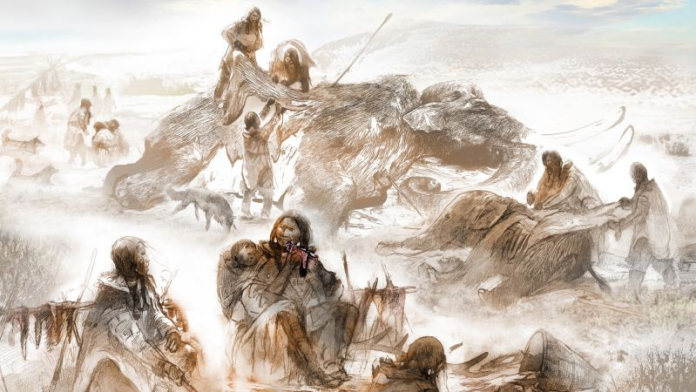Sign up for CNN’s Wonder Theory science newsletter. Explore the universe with news on fascinating discoveries, scientific advancements and more.
CNN —
Ancient ancestors of Native Americans, known as the Clovis people, mostly ate mammoths and other large animals during the most recent ice age, according to a new study.
Scientists examined the chemical signatures left by food items in the remains of an 18-month-old child who was buried about 13,000 years ago before being discovered in 1968 near Wilsall, a small town nestled in southwest Montana.
Since the young boy was still nursing, the team of scientists from American and Canadian universities were able to infer his mother’s diet.
They concluded that she mostly ate mammoths, which made up around 35% of her diet, as well as elk, bison and camel while her consumption of small mammals and plants was neglible.
Such a discovery made the Clovis people “more real to me as folks I could almost interact with directly,” said co-lead author James Chatters of McMaster University, Ontario, in a press briefing. “It’s gone from being artifacts in the dirt and animal bones and patterns in the landscape to a group of people I can imagine.”
The Clovis people likely travelled long distances following the mammoths’ migration routes, helping to explain how they “could spread throughout North America and into South America in just a few hundred years,” Chatters added in a statement.
A woolly mammoth model is seen during installation at the American Museum of Natural History in October 2023. Bebeto Matthews/AP
Experts have long known that the Clovis people used weapons tipped with a sharp, lance-shaped “Clovis points” to kill mammoths and other large game but until now, only secondary evidence like animal remains or specific weapons found at archaeological sites had been available to suggest their diet, according to the study.
That led to much debate regarding the diet of the Clovis people, with some scientists arguing they hunted large animals and others suggesting that they had a more varied diet including small animals, plants and fish, given the difficulties of hunting such large animals.
According to Gary Haynes, an emeritus professor at the University of Nevada who wasn’t involved in the study, “this new paper refutes that (second) line of reasoning.”
“The significance of this paper is it provides direct rather than circumstantial evidence that mammoths were in the Pleistocene diet,” Haynes, who has long studied ice age animals and the Clovis people, told CNN Thursday.
To provide direct evidence, this paper used stable isotope analysis, which, after adjusting for the effects of nursing, allowed scientists to identify the specific foods that the infant’s mother ate by studying different variants, called isotopes, of carbon and nitrogen.
Scientists compared the mother’s isotopic signatures to other food items to reach their conclusions. They also compared it to other omnivores and carnivores, finding that her diet was most similar to a scimitar cat that primarily hunted mammoths.
For Shane Doyle, executive director of Yellowstone Peoples, who liaised with Native American tribes throughout the study, the findings illustrate “how amazing (the Clovis people) really were.”
“They were skilled, but they were determined, and they were some of the most resilient people that have ever been on this planet,” Doyle said in a press briefing.
By hunting mammoths, it is possible that humans helped hasten the animal’s extinction.
“The largest mammoth sites in the USA and Central Europe contain the remains of mainly younger animals… possibly the easiest to kill,” Haynes said. “The removal of this generation of animals in North America during a period of critical climate change could have been the main factor that led to mammoth extinction.”
The study was published Wednesday in the journal Science Advances.




